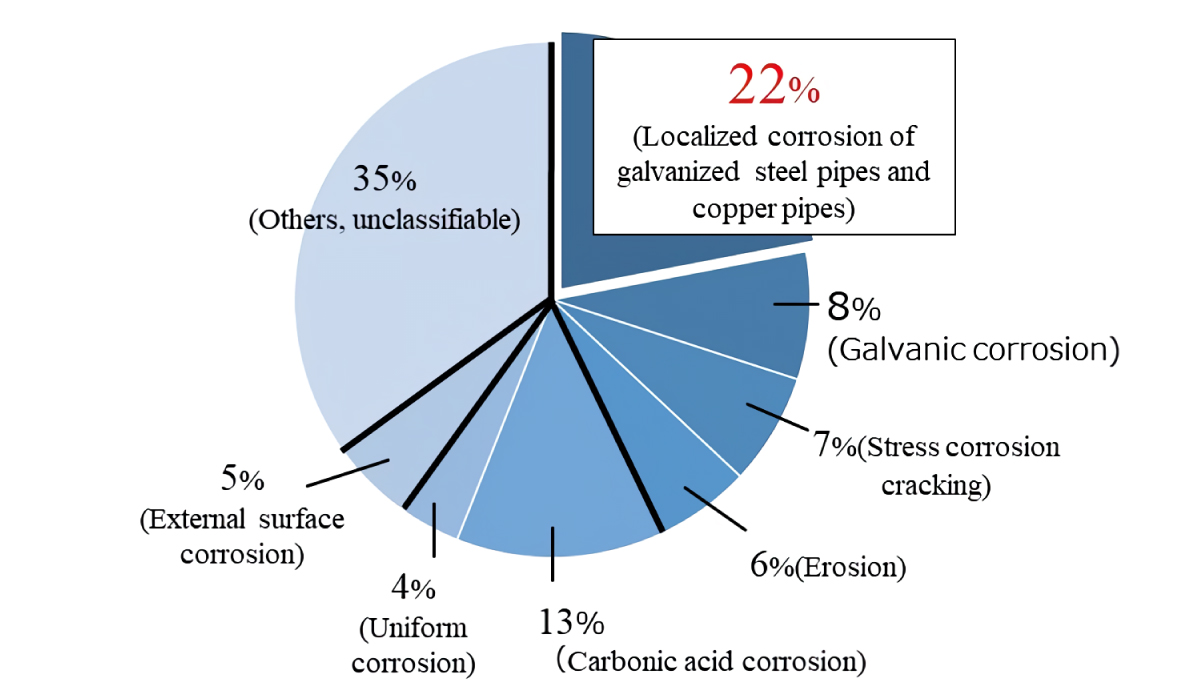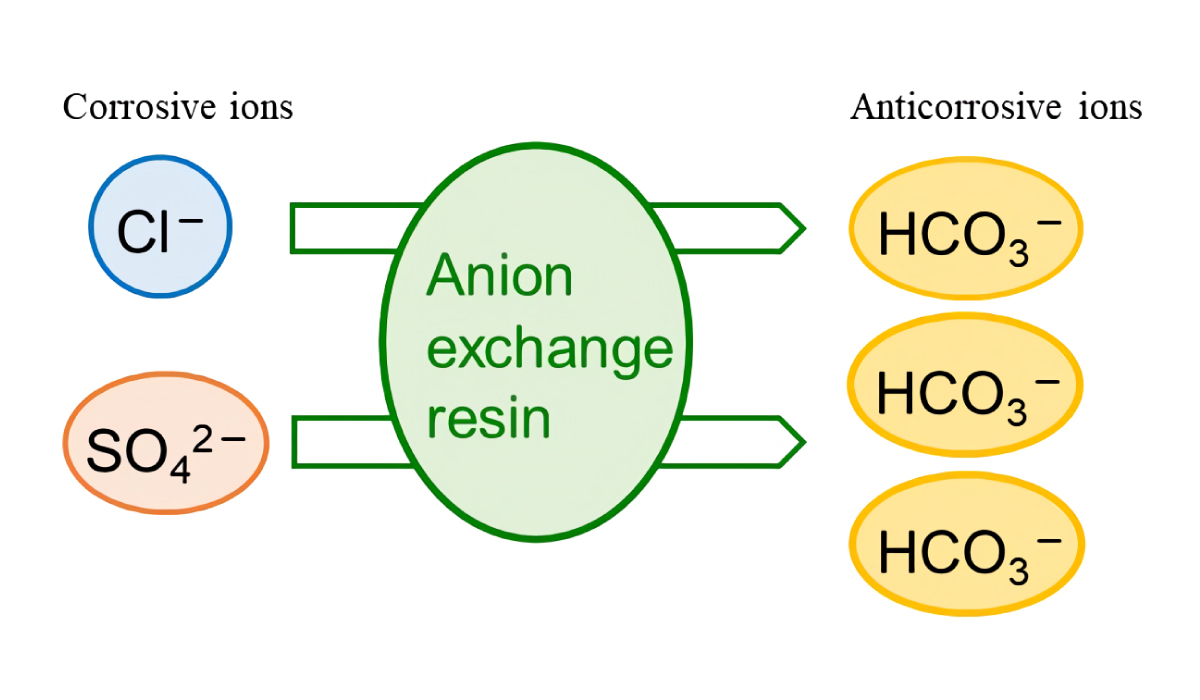Conservation of Resources with Non-chemical Corrosion Prevention System
SHINRYO CORPORATION
Outline
The lifespan of a building or other structure is generally 30 to 50 years, with the lifespan of building equipment such as interior plumbing said to be even shorter at 10 to 15 years. However, through reduction of the deterioration caused by corrosion, pipes and other metal materials can be made longer-lived, consuming fewer resources. Shinryo Corporation has developed the non-chemical corrosion prevention system Corro-Guard®that lengthens the lifespan of interior pipes and conserves resources. Corro-Guard is composed of the following technologies (1) to (3).
(1) Metal corrosion-resistant water: Anion exchange water that constrains corrosion of the inner surfaces of pipes
(2) Non-effluent flushing: Flushing performed with water from which oxygen, a cause of corrosion, has been removed
(3) Visualization of corrosion: Monitoring of dissolved oxygen in circulating water and the rate of corrosion in pipes,and visualization of the state of corrosion on the inner surfaces of pipes
Corro-Guard has demonstrated these effects in new buildings, and is currently in operation at four properties. Test operation to verify effects is underway in the equipment of existing buildings.
Description
Various types of corrosion occur in the pipes and other metal materials used in building equipment. Occurrences of corrosion with obvious cause, such as erosion or galvanic corrosion, are declining. However, localized corrosion that intensively corrodes portions of pipes often occurs due to the lack of practical countermeasures (Fig. 1). If local corrosion occurs in air conditioning pipes or in the heat exchanger copper tubes of chillers, air conditioning equipment may become inoperable. How to prevent this local corrosion is a major issue.
Shinryo Corporation has developed Corro-Guard® a non-chemical corrosion prevention system that resolves this issue. The system is implemented in a building during construction. It is composed of the following technologies (1) to (3).
(1) Preventive maintenance technology: Metal corrosion-resistant water
By using anion exchange resin (resin that exchanges negative ions) to exchange corrosive ions (Cl-, SO42-) in tap water with anticorrosive ions (HCO3-), metal corrosion-resistant water is produced (Fig. 2). Using this water for flooding and flushing during pipe installation constrains localized and overall corrosion on the inner surfaces of pipes (Figs. 3). A major feature of this system is that it prevents corrosion from the stage of pipe installation.
(2) Preventive maintenance technology: Non-effluent flushing
In the work of flushing to remove debris from pipes during installation, replacement of water several times is a common method. However, the replacement of the water also supplies oxygen into the pipes, which becomes a cause of corrosion. In response, we are advancing the adoption of non-effluent flushing technology that performs flushing without replacing the water. Flushing while filtering out debris in the pipes constrains corrosion caused by oxygen. In addition, as water is not replaced, water consumption can also be reduced.
In non-effluent flushing, the timing for the completion of work is determined quantitatively, based on measurements of pH, dissolved oxygen, and turbidity. This ensures reliable flushing work.
(3) Predictive maintenance technology: Visualization of corrosion
Assessing the state of corrosion on the inner surface of pipes has conventionally been a difficult task. In response, we have developed technology for the visualization of corrosion. This technology uses sensors to monitor the dissolved oxygen (DO) in the water in pipes and the corrosion rate of the pipe material, to check the state of corrosion on the inner surface of the pipes in real time.
The non-chemical corrosion prevention system Corro-Guard enables preventive and predictive maintenance, rather than ex post facto maintenance that responds to corrosion after the appearance of troubles.Corro-Guard has demonstrated these effects in new buildings, and is currently in operation at four properties. Test operation to verify effects is underway in the equipment of existing buildings. We are also moving forward with further technological developments, including the expansion of applicable pipe types and the establishment of efficient water treatment methods. We intend to promote use of the system in buildings and plants in Japan and overseas, and will work to reduce corrosion-related troubles, extend the lifespans of building equipment, and conserve resources.
Partner(s)
Center for Creation of Symbiosis Society with Risk, Yokohama National University
Supplementary information
https://www.shinryo.com/news/20170906.html
Patent No. 6114437, Patent No. 6329672
Other Innovation Challenges
Promoting Low Carbon Technology and Energy-saving in Semiconductors Manufacturing Process Using Electrolyzed Water
SHINRYO CORPORATION
Similar Innovation Challenges
Accelarating the penetration of renewable energy resources with “Open Energy System”
Sony Group Corporation
Achieving net-zero carbon emissions from plant factories using full artificial lighting
Taikisha Ltd.
Advanced technology for buildings providing energy-saving and comfortable indoor environment (under Net Zero Energy condition)
Mitsubishi Electric Corporation
AI control reduces base station power consumption by up to 50%
KDDI CORPORATION










